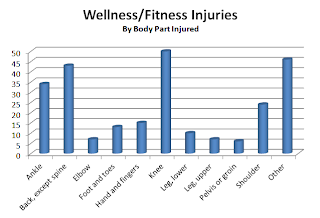One of the Texas Commission on Fire Protection’s most important roles is to help improve the safety of Texas fire fighters. As you know, with your help, our Fire Fighter Injury Reporting system has been collecting valuable information about the injuries Texas fire fighters are incurring. Through this system, we’re also following up with departments that have “Near Misses” to learn what went right and wrong at these occurrences.
Taking seriously our mission to improve the safety of Texas fire fighters, the commission has developed an injury investigation reporting document to help investigate “Near Misses.” By making this form available to the fire service, and providing technical assistance when necessary, we hope to help everyone learn from these events. The intent of the project is to facilitate a complete and unbiased review of all aspects of an event, including:
- The department’s role (for example, department standard operating procedures).
- Personnel functions and the level of performance and proficiency.
- Personnel training.
- Equipment deployed and its performance.
- Command structure during the event.
As we’ve discussed in past blog posts, to succeed, these reviews must explore both strengths and weaknesses found at the event. The goal of the review is to gain a better understanding of the occurrence and to learn what steps might be necessary to prevent such events from occurring in the future.
Kudos to Departments Performing “Near Miss” Investigations
The commission would like to recognize a few departments that, true to their mission and members, took the difficult and sometimes uncomfortable steps to change their culture by evaluating “near miss” events, thus fostering a safety culture within their departments:
The commission would like to recognize a few departments that, true to their mission and members, took the difficult and sometimes uncomfortable steps to change their culture by evaluating “near miss” events, thus fostering a safety culture within their departments:
- On June 5, 2011, the Wichita Falls Fire Department had a structure fire in an attached garage. Two of their fire fighters received burns.
- On June 17, 2011, the Flower Mound Fire Department had a structure fire in a two story residential home. Two of their fire fighters received burns.
- On September 5, 2011, Hutto Fire Rescue had a structure fire in a residential structure with an attached garage. Two of their fire fighters received burns.
Kudos to Departments Reporting Quality Information to Our Injury Reporting System
The commission would also like to recognize the entities that are actively participating in the Fire Fighter Injury Reporting program. The high quality of information that departments are providing is contributing to our knowledge base. This helps us to provide solid recommendations and up-to-date information about what is happening throughout the state. Our bigger departments, including San Antonio, Dallas, Houston, El Paso and Corpus Christi, have been particularly active. We would like to thank all the reporting departments and their chiefs for encouraging and participating in the program.
The commission would also like to recognize the entities that are actively participating in the Fire Fighter Injury Reporting program. The high quality of information that departments are providing is contributing to our knowledge base. This helps us to provide solid recommendations and up-to-date information about what is happening throughout the state. Our bigger departments, including San Antonio, Dallas, Houston, El Paso and Corpus Christi, have been particularly active. We would like to thank all the reporting departments and their chiefs for encouraging and participating in the program.
Thank you to everyone who has contributed to our initiatives, thus far!
Please contact our Injury Reporting Staff if you have any questions about these initiatives.



